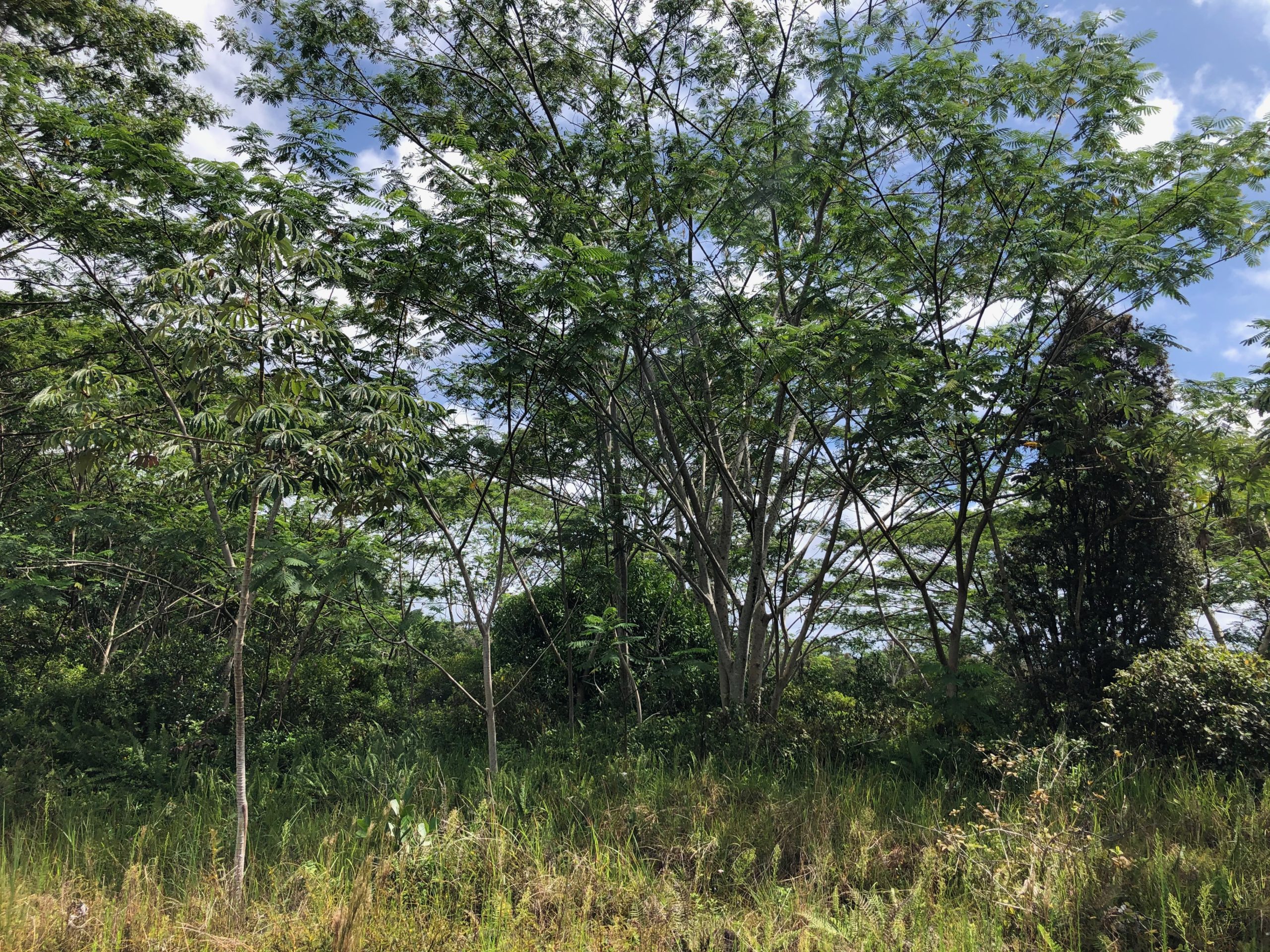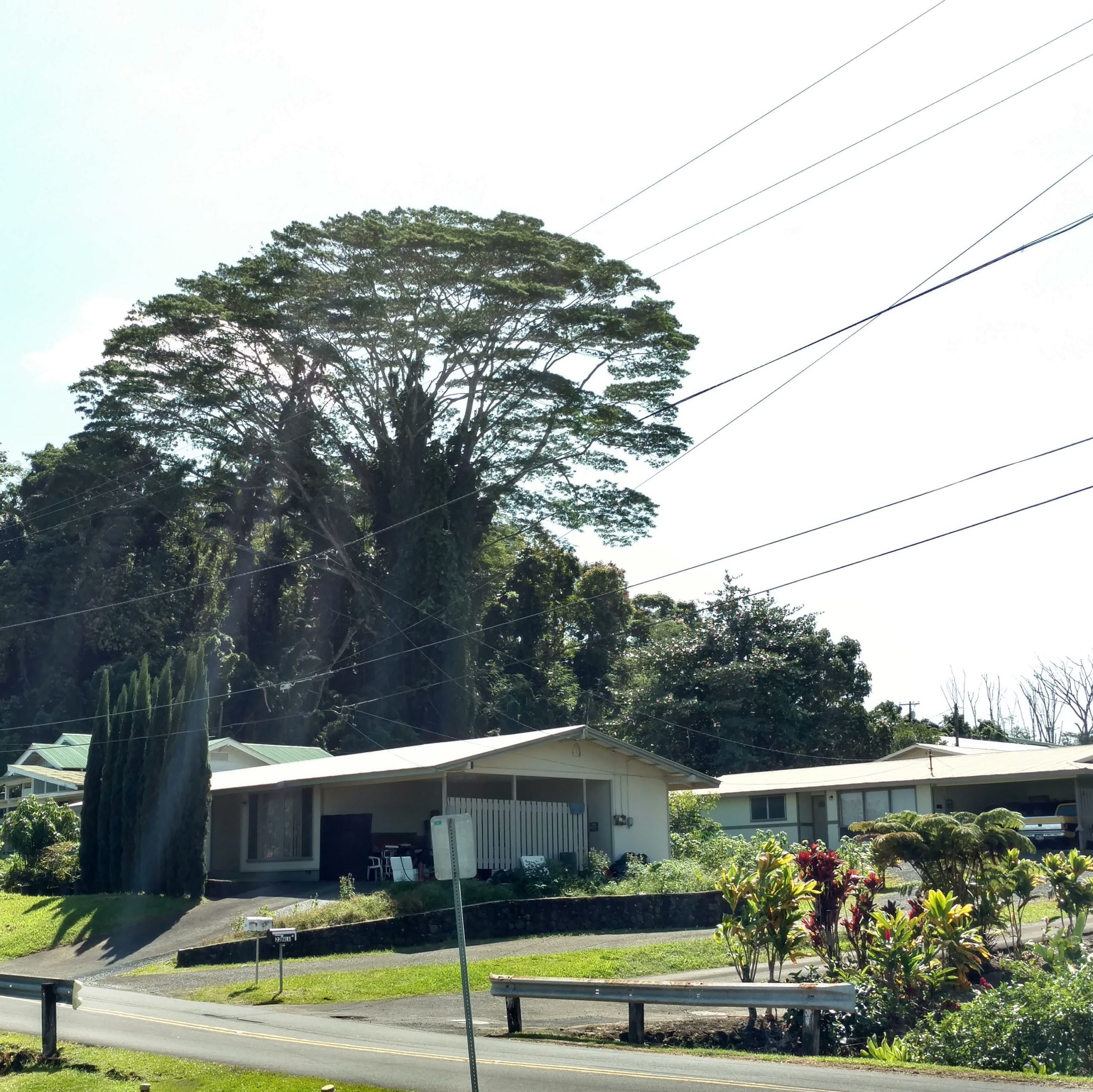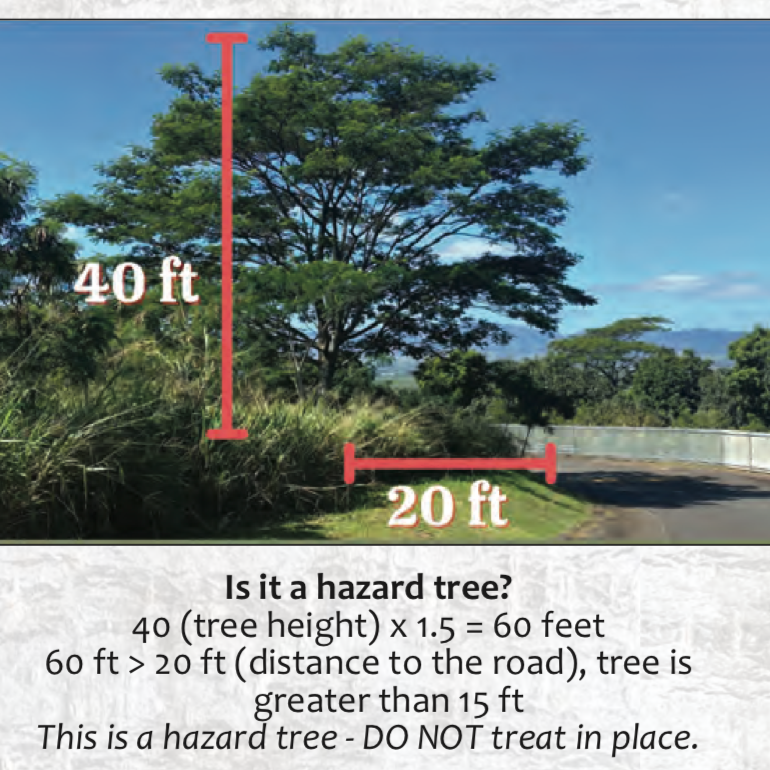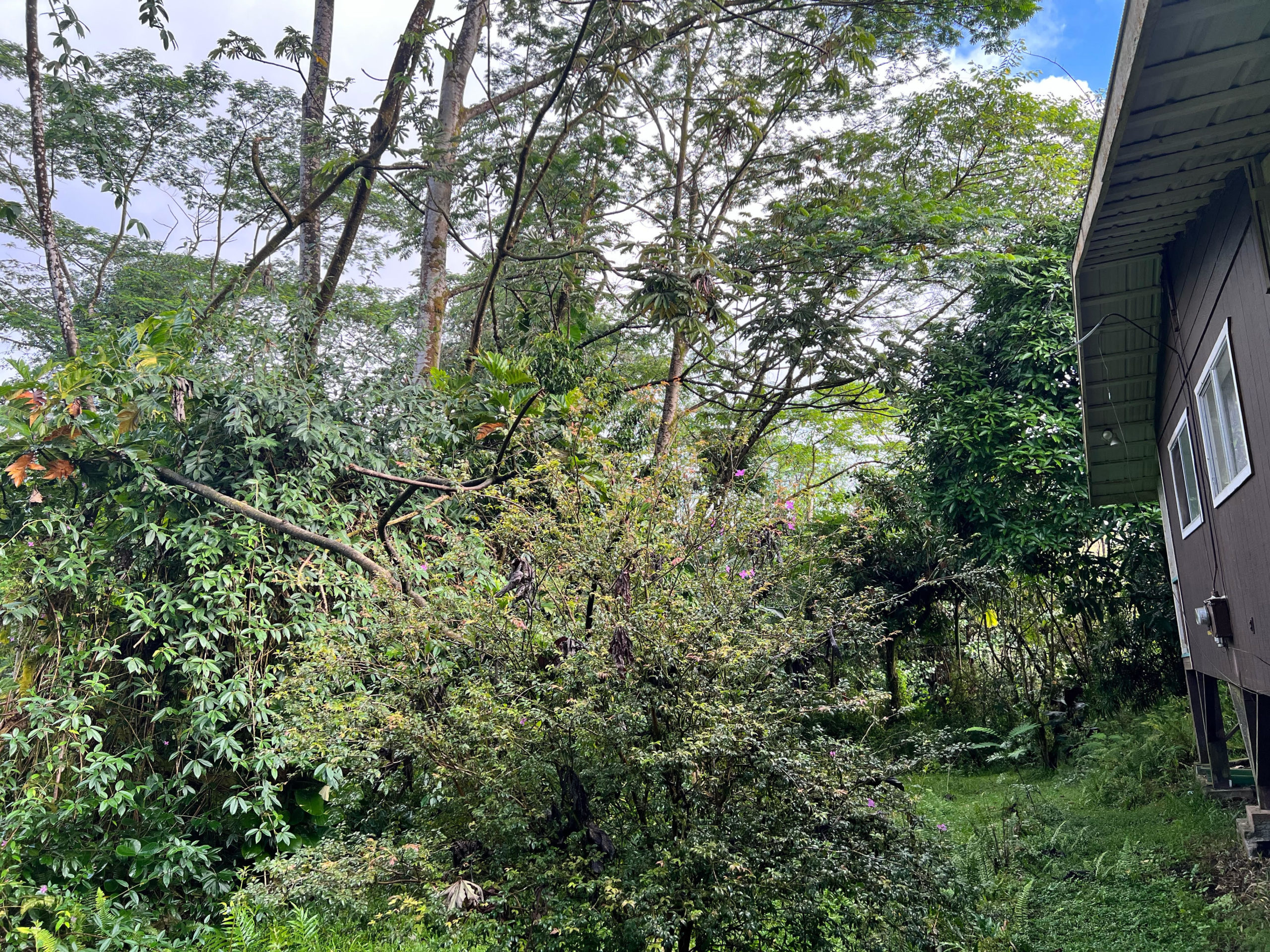
Addressing Community Hazards
First step: Notify the property owner
Contact the property owner. If you live next to a lot with albizia that directly threatens your house and other structures, you must first notify the owner of the problem. Send a letter, including photos of the tree and structure(s) it threatens. Many times absentee owners are not aware of the specific threats of albizia, so be sure to include information about the problem of albizia. Make copies of all documents, send by certified mail, and save the return receipt proving that the notice was sent and received by your neighbor.
You can find an example notification letter here, which you can adjust to fit your needs. See below for the specific requirements of the county complaint program to determine if you need additional documentation.
Locating a mailing address: you can use the County TMK system. Many residents find their neighbor does take the complaint seriously when they are notified, and follow through with tree mitigation.
Importance of notification: Information provided by the Legal Aid Society of Hawai’i after Tropical Storm Iselle indicated that should damage occur due to a dropped limb or falling albizia tree, proof that the property owner had previous knowledge about the risks yet did not act to mitigate the hazard could influence the court judgment.

Albizia trees that overhang houses are considered hazards.

Hazard trees should never be girdled or treated, but must be trimmed or felled by a qualified arborist.
Can I just treat the trees myself? If you have contacted the owner and received no response, you may not want to wait until the trees grow larger which can cause more damage. Hawai’i law allows neighbors to enter a property to treat or remove albizia trees on a vacant lot provided they have attempted to contact the owner, have confirmation from an arborist that the trees can be treated (chemical or girdling) safely, or have hired an arborist for any hazard trees. Please read the details of the statute to be sure you are operating under the law.
Next steps: Reporting hazards to County authorities
Once you have contacted the property owner with information about the specific trees and hazard of concern, and have provided them with the relevant state and county laws related to hazard trees, you should wait 30 days for a response. After that, you can take your complaint to the Hawai‛i County hazard mitigation program.

Hawai’i County Unsafe Flora Complaint Process
Chapter 14 (Sec 14-150, ordinance 20-86) of the Hawai‛i County Code addresses trees within the front 100 feet of the property facing a county road, or that pose an imminent danger to a neighboring property. Include in your complaint the precise location of the property and tree, and share the details of the notification package you sent to the owner (including certified mail receipt). Briefly describe the hazardous situation. Use the online form to report hazardous albizia trees and select the option “Unsafe flora posing imminent danger.” Complaints can be submitted to the Hawaii County Department of Public Works here.
How can I report a downed tree in the road or request action on roadside trees?
State Highways: The Department of Transportation (HDOT) is responsible for maintaining state highways and right-of-ways (ROW). HDOT contracts licensed arborists to remove hazard trees in the ROW. The width of a ROW may vary from just a few feet to many yards, and only trees whose trunks are within that ROW can be treated by HDOT contractors. Trees that are growing outside the ROW but hanging over the road cannot be addressed by HDOT. To report a hazardous tree growing within the ROW along a state highway, call 808-933-8866.
County Roads: The Department of Public Works (DPW) is responsible for addressing hazard trees that are in the right-of-way (ROW) along county roads. Section 20, Article 2 of the Hawai‛i County Code addresses trees within the front 100 feet of the property facing a county road, or that pose an imminent danger to a neighboring property. The County reporting form for trees fallen into the road is here.
Power lines: Hawaiian Electric (formerly HELCO) has an economic interest in trimming and cutting trees that threaten power lines. If the base of the tree is within their easement or legal ROW, they may choose to remove the tree. But in many areas, the easement is only five feet wide. If the tree stands on private property and damages the power line, in theory, it is the homeowner that could be liable for the damage. If you encounter trees that are hanging over power lines, you may submit a request for tree trimming at (808) 969-6666.
Other roads: Many roads on the Big Island, particularly in Puna, are privately owned by subdivisions. The cost of removing hazard trees far exceeds the dues collected for road maintenance. Let your county and state representatives know that you support legislation to help subdivisions address the problems of large hazard albizia along roadsides.
If you notice young albizia starting to sprout up on roads near you, act now! A handful of volunteers can make amazing strides in stopping the problem before the threat becomes an expensive issue, and BIISC is happy to provide free training and assistance!
